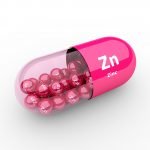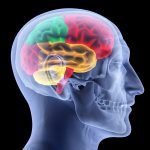Treating Parasites In Children
Stephen Wangen, ND
Parasites can be found in anyone, regardless of where the person may live or have been. This is just as true for children as it is for adults. As naturopathic doctors, we are more likely than the average physician to treat for parasites, partly due to our use of comprehensive stool tests, which assess for a wide variety of parasites.
Here, we will review the treatment of Cryptosporidium, Giardia lamblia, Blastocystis hominis, Dientamoeba fragilis, Endolimax nana, and Entamoeba histolytica in children. Having tested thousands of patients for these parasites, I have treated for each parasite many times. Parasites are often challenging to treat, but this can be especially true in children.
Diarrhea is the most common presentation of the aforementioned parasites, although cases of gas, bloating, and even abdominal pain can by themselves be the sole manifestation of a parasite infection. Other indirect symptoms, such as fatigue, muscle pain, and joint pain, can also be symptoms of parasitic infection. There are additional potential symptoms of parasitic infections; however, it is not within the scope of this article to explore all of them.
Diagnosing Parasites
Parasites cannot be ruled out based on history alone. The gold standard for assessing the presence of parasites remains stool antigen ovum and parasite (O&P) testing, though this may change as new technology becomes available. Although detecting parasites in the stool may sound straightforward, testing can be challenging. Often, multiple stool samples are required before a positive result can be obtained; even a 3-day stool collection may be inadequate to detect parasites, due to low sensitivity, poor preparation, and other issues.
What this means for the physician is that if you are suspicious of the presence of pathogenic parasites and you are otherwise finding it difficult to resolve your patient’s symptoms, particularly diarrhea, then you should keep parasites on the differential diagnosis list. At some point, you may even need to treat for them presumptively.
But before you do this, there are a variety of stool tests available for the assessment of parasites. Major commercial laboratories generally provide good testing for Cryptosporidium and Giardia, at least when requested. However, on a standard O&P, they may not assess for or report many of the other parasites previously mentioned.
Functional testing laboratories that are more familiar to naturopathic doctors will usually test for and report all of the parasites mentioned above, without the need for the doctor to specifically request testing for each parasite. This is extremely important, because each of these parasites has the potential to be pathogenic, in spite of conventional medical standards that often suggest otherwise. It is not within the scope of this article to review the pathogenicity of these parasites, but there have been many publications in the medical literature to support this opinion.1-10
Cryptosporidium and Giardia
The 2 most commonly recognized parasites mentioned above that are known to the conventional medical world are Cryptosporidium and Giardia lamblia. Most research and medical literature discussing parasite treatment refers to treating these 2 parasites. There have been several notable Cryptosporidium outbreaks in the United States in recent years. These were largely due to the ability of Cryptosporidium to survive standard public water-treatment systems. It should also be noted that Cryptosporidium can be found in open water and in swimming pool water.11
Giardia is not quite so insidious; however, it is possible to ingest Giardia without drinking untreated water straight from a stream or a lake, as I was taught as a kid hiking in Colorado. Sometimes parasites find you, regardless of how careful you are, and children are just as susceptible – if not more susceptible – than adults to becoming infected with Giardia.
Nonconventional Pathogenic Parasites
As many naturopathic doctors know, we are frequently confronted with a group of parasites that have, for some reason, fallen through the medical cracks. These include Blastocystis hominis, Dientamoeba fragilis, Endolimax nana, and Entamoeba histolytica. These parasites are not nearly as simple to diagnose as Cryptosporidium and Giardia. They sometimes cause symptoms and other times do not. One hypothesis for this is that they have different strains, some of which are pathogenic and some of which are non-pathogenic.2,6,12,13
For example, literature describes several different strains of B hominis, some of which are pathogenic and cause diarrhea.2,12 However, from a clinical perspective, we are not yet able to identify different strains of parasites. As a result, we have to base our treatment on the presentation of the patient and the lab work that is available to us.
There are multiple published studies and case studies that support the need to treat patients in whom these parasites are found. These reports have documented the presence of Blastocystis hominis, Dientamoeba fragilis, Endolimax nana, and/or Entamoeba histolytica in symptomatic patients whose lab work was otherwise normal, and whose symptoms resolved following treatment for these parasites.1-10
Botanical Treatments
Once we have identified a causative parasite, the next question is how to treat it. Getting compliance with medicine in children is difficult, whether it is due to an inability to swallow capsules, the unpalatable taste of tinctures, or the relatively long course of treatment. Furthermore, glycerin tinctures for herbs such as Juglans nigra (black walnut), Artemesia (wormwood), Jamaica quassia, garlic, and grapefruit seed extract are not commonly available.
Unfortunately, for whatever reason, I have observed over the years that many of the parasites verifiable on lab testing have not consistently or even regularly responded to botanical medicine, either clinically or on follow-up lab work. I do not doubt that there are herbal medicines with strong anti-parasitic properties, but the reality is that I have not had great success eradicating these parasites with botanical medicine.
Regardless, you may choose to begin treatment with herbal medicine. If you do, be aware that many of these herbs can have strong side effects, particularly black walnut and wormwood. For example, they may cause abdominal pain, diarrhea, and digestive symptoms similar to those already being experienced by the patient.
Prescriptive Medications
Our options for prescriptive medications in the United States are relatively limited. However, there are medications for treating these parasites that are used in children. These are primarily metronidazole, tinidazole, and nitazoxanide.
Metronidazole
Many of us are probably most familiar with metronidazole. If you’ve ever prescribed it, then you probably know that your patients aren’t likely to enjoy the experience. It is very common for patients to complain of fatigue, headaches, a metallic taste, nausea, vomiting, abdominal cramping, and diarrhea. This medication has been approved by the FDA for use in the pediatric population for only amoebiasis. However, due to the limited number of drug options, it is often used to treat other parasites.
Metronidazole Dosing
- 35-50 mg/kg/24 hours, divided TID for 10 days when used in children
Tinidazole
Another related treatment option, in the same class of drugs as metronidazole, is the drug tinidazole, which has been approved for the treatment of giardiasis in children over the age of 3. It is dosed in a single dose of 50 mg/kg (up to 2 g) with food, which may sound preferable to the much longer course of metronidazole. However, it is often associated with many of same side effects noted above for metronidazole, as well having the potential to cause seizures and neuropathy.14
Nitazoxanide
Nitazoxanide is the other available option for treating parasites. This is a much lesser-known medication than the others, but it’s been around since 1973.15 Nitazoxanide is generally well-tolerated, especially when compared with metronidazole and tinidazole. As with any medication, there are possible side effects with nitazoxanide, including abdominal pain, diarrhea, vomiting, and headaches. However, in my experience they are, on average, far less common and less severe than those found with the other 2 medications.
Another potential advantage of nitazoxanide is that it can also be used to treat helminths. These include tapeworms, flukes (schistosomiasis), roundworms (ascariasis, trichinosis), pinworms (enterobiasis), hookworms, and whipworms (trichuriasis).
The use of nitazoxanide for the treatment of both Cryptosporidium and Giardia is approved by the FDA for use in children. This is good news, because it gives us a precedent for using this drug in this population. Nitazoxanide treatment consists of a fairly simple 3-day course that should be taken with food. Fortunately, it comes in both tablets and a strawberry-flavored suspension, without the need for compounding.
Nitazoxanide Dosing
- 100 mg BID for 3 days for patients aged 1-3
- 200 mg BID for 3 days for patients aged 4-11
- 500 mg BID for 3 days for patients over age 12
Response rates for the treatment of Cryptosporidium and Giardia with nitazoxanide are 85-100% in children over 1 year old.16 It has been found to be more effective than metronidazole for treating Giardia.17 Response rates for the treatment of other parasites are unknown, although some publications have shown that our nonconventional pathogenic parasites respond to nitazoxanide.3,4,16,18 However, it’s important to know that even with prescriptive medications, successful eradication of these parasites can sometimes be difficult.
Summary
In the United States, there are relatively few options for the treatment of parasites. Botanical medicines for treating parasites show inconsistent results and present difficulties with compliance, especially in children. Metronidazole and tinidazole are prescriptive options, but frequently produce significant side effects. Nitazoxanide may present a novel and effective treatment approach for those unfamiliar with it. It also represents an option that is generally less problematic than other drug treatments. Additionally, it can be used to treat a wide variety of parasites and is often effective with a very short course of treatment.
Regardless of your approach, be sure to warn patients and their parents about the potential for side effects when using any of these treatments. Monitor compliance, and no matter what treatment you choose, follow up with repeat stool testing as necessary. These parasites can be very resilient organisms and very difficult to treat. Be prepared to repeat or change treatments as needed. But your patients will thank you when they get better.
Case study
A 5-year-old girl presents with diarrhea and very smelly gas. These new symptoms began approximately 3 months ago after she spent a week at summer camp, swimming in a lake – a possible source of parasites. Previous to that, the patient had been healthy. Her mom took her to her pediatrician, who did an O&P x 3, and the results were negative. Her mom had administered probiotics, which had not helped much. The patient was now also feeling lethargic.
A new O&P x 3 demonstrated the presence of Dientamoeba fragilis. The patient was treated for 3 days with nitazoxanide liquid suspension, 200 mg BID. This treatment was followed up with chewable probiotics for 1 month. Within 4 days following the course of nitazoxanide, the patient’s mother reported that her daughter’s diarrhea and gas had resolved. Her bowel movements were well-formed and she was energetic and back to her usual self.
 Stephen Wangen, ND, is a former IBS sufferer and the founder and medical director of the IBS Treatment Center, located in Seattle and Los Angeles. He is an internationally-recognized speaker and the author of 2 popular books. Dr Wangen is a 1999 graduate of Bastyr University, and continues to serve there as an affiliate clinical faculty member. He is on the board of the new GastroANP, which he encourages you to join! (GastroANP.org). His passion is to change the medical system and bring naturopathic care to the masses.
Stephen Wangen, ND, is a former IBS sufferer and the founder and medical director of the IBS Treatment Center, located in Seattle and Los Angeles. He is an internationally-recognized speaker and the author of 2 popular books. Dr Wangen is a 1999 graduate of Bastyr University, and continues to serve there as an affiliate clinical faculty member. He is on the board of the new GastroANP, which he encourages you to join! (GastroANP.org). His passion is to change the medical system and bring naturopathic care to the masses.
References:
- Johnson EH, Windsor JJ, Clark CG. Emerging from obscurity: biological, clinical, and diagnostic aspects of Dientamoeba fragilis. Clin Microbiol Rev. 2004;17(3):553-570.
- Boorom, KF, Smith H, Nimri L, et al. Oh my aching gut: irritable bowel syndrome, Blastocystis, and asymptomatic infection. Parasit Vectors. 2008;1(1):40.
- Rossignol JF, Kabil SM, Said M, et al. Effect of nitazoxanide in persistent diarrhea and enteritis associated with Blastocystis hominis. Clin Gastroenterol Hepatol. 2005;3(10);987-991.
- Stauffer JQ, Levine WL. Chronic diarrhea related to Endolimax nana: response to treatment with metronidazole. Am J Dig Dis. 1974;19(1):59-63.
- El-Shazly AM, Abdel-Magied AA, El-Beshbishi SN, et al. Blastocystis hominis among symptomatic and asymptomatic individuals in Talkha Center, Dakahlia Governorate, Egypt. J Egypt Soc Parasitol. 2005;35(2):653-666.
- Kiliç E, Yazar S, Saraymen R. Lipid Peroxidation Level in Patients with Blastocystosis
Inönü Üniversitesi Tip Fakültesi Dergisi. 2003;10(1):1-3. Available at: http://www.totmdergisi.org/articles/2003/volume10/issue1/2003_10_1_1.pdf. Accessed October 15, 2014. - Qadri SM, al-Okaili GA, al-Dayel F. Clinical significance of Blastocystis hominis. J Clin Microbiol. 1989;27(11):2407-2409.
- Ponce de Leon P, Svetaz MJ, Zdero M. [Importance of the diagnosis of Blastocystis hominis in the parasitological examination of feces].Rev Latinoam Microbiol. 199133(2-3):159-164.
- Spencer MJ, Chapin MR, Garcia LS. Dientamoeba fragilis: a gastrointestinal protozoan infection in adults. Am J Gastroenterol. 1982;77(8):565-569.
- Johnson EH, Windsor JJ. fragilis: the unflagellated human flagellate. Br J Biomed Sci. 1999;56(4):293-306.
- Centers for Disease Control and Prevention. Healthy Swimming /Recreational Water. Cryptosporidium. CDC Web site. http://www.cdc.gov/healthywater/swimming/rwi/illnesses/cryptosporidium.html. Accessed October 15, 2014.
- Yakoob J, Jafri W, Beg MA, et al. Irritable bowel syndrome: is it associated with genotypes of Blastocystis hominis? Parasitol Res. 2010;106(5):1033-1038.
- Haresh K, Suresh K, Khairul Anus A, Saminathan S. Isolate resistance of Blastocystis hominis to metronidazole. Trop Med Int Health. 1999;4(4):274-277.
- NIH Toxicology Data Network Web site. http://toxnet.nlm.nih.gov/cgi-bin/sis/search/a?dbs+hsdb:@term+@DOCNO+7362. Accessed October 15, 2014.
- Rossignol JF, Cavier R. New derivatives of 2-benzamido-5-nitro thiazoles. US 3950391 [patent]. April 13, 1976. Available at: http://www.google.com/patents/US3950351. Accessed October 15, 2014.
- Rossignol JF, Lopez-Chegne N, Julcamoro LM, et al. Nitazoxanide for the empiric treatment of pediatric infectious diarrhea. Trans R Soc Trop Med Hyg. 2012;106(3):167-173.
- Ortiz JJ, AyoubA, GargalaG, et al.Randomized clinical study of nitazoxanide compared to metronidazole in the treatment of symptomatic giardiasis in children from Northern Peru.Aliment Pharmacol Ther. 2001;15(9):1409-1415.
- Nagata N, Nagata N, Marriott D, Harkness J, et al. In vitro susceptibility testing of Dientamoeba fragilis. Antimicrob Agents Chemother. 2012;56(1):487-494.









